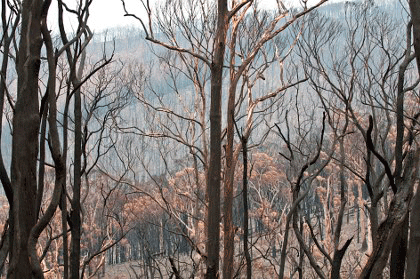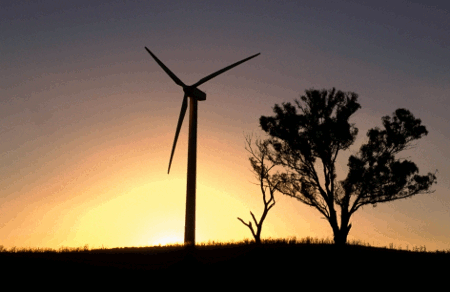
|
Published: 19 September 2011
Ecologists say logging increases risk of ‘mega’ fires
Logging in Victoria’s mountain ash forests is increasing the risk of catastrophic wildfires, according to a leading Australian ecologist.
In a study published in the US journal Proceedings of the National Academy of Sciences, a team led by Professor David Lindenmayer from the Australian National University analysed decades of ecological data, most recently from Victoria’s mountain ash forests after the 2009 Black Saturday bushfires.
The team concluded that timber and pulpwood harvesting carried out over large areas of Victoria’s mountain ash forests over the past century has created an area dominated by young fire-prone trees, increasing the risk of ‘mega fires’.
‘Before European settlement, the fire regime was dominated by an infrequent severe wildfire that occurred in late summer,’ says Prof. Lindenmayer.
‘What we are now realising is the combination of wildfire and logging is creating a previously unrecognised “landscape trap” in which the behaviour of the ash forest landscapes is markedly different from that which would have occurred before European settlement.
‘The core process underlying this landscape trap is a positive feedback loop between fire frequency and severity, and a reduction in forest age at the stand and landscape levels caused by logging.
‘Individual patches of logged forest are becoming more fire-prone, and when these are taken together, the whole landscape is at risk of being consumed by mega fires.’
Professor Lindenmayer adds that the increasing prevalence of dense young regenerating stands will lead to an increased risk of severe wildfires happening more often.
‘Detailed on-site measurements following the 2009 wildfires have revealed that young forest burns at higher severity than mature forest, and their analysis suggest we will see more of these severe wildfires in the future.
‘Once a mountain ash forest landscape is dominated by widespread areas of young fire-prone forest, the increased risk for high-severity widespread fire decreases the probability that the landscape can return to its former mature state – particularly under the drier and warmer conditions associated with climate change.
‘That’s why it’s described as a landscape trap; it’s self sustaining.’
The study also showed that, not only will these forests be more prone to extensive wildfire, but stands of mountain ash forest will be replaced by other species, particularly wattle.
‘These changes will significantly impair ecological functions like carbon storage, water production and biodiversity conservation,’ says Prof. Lindenmayer. ‘This is historically unprecedented and is beginning to dominate the mountain ash landscapes we see today.’
Source: ANU




